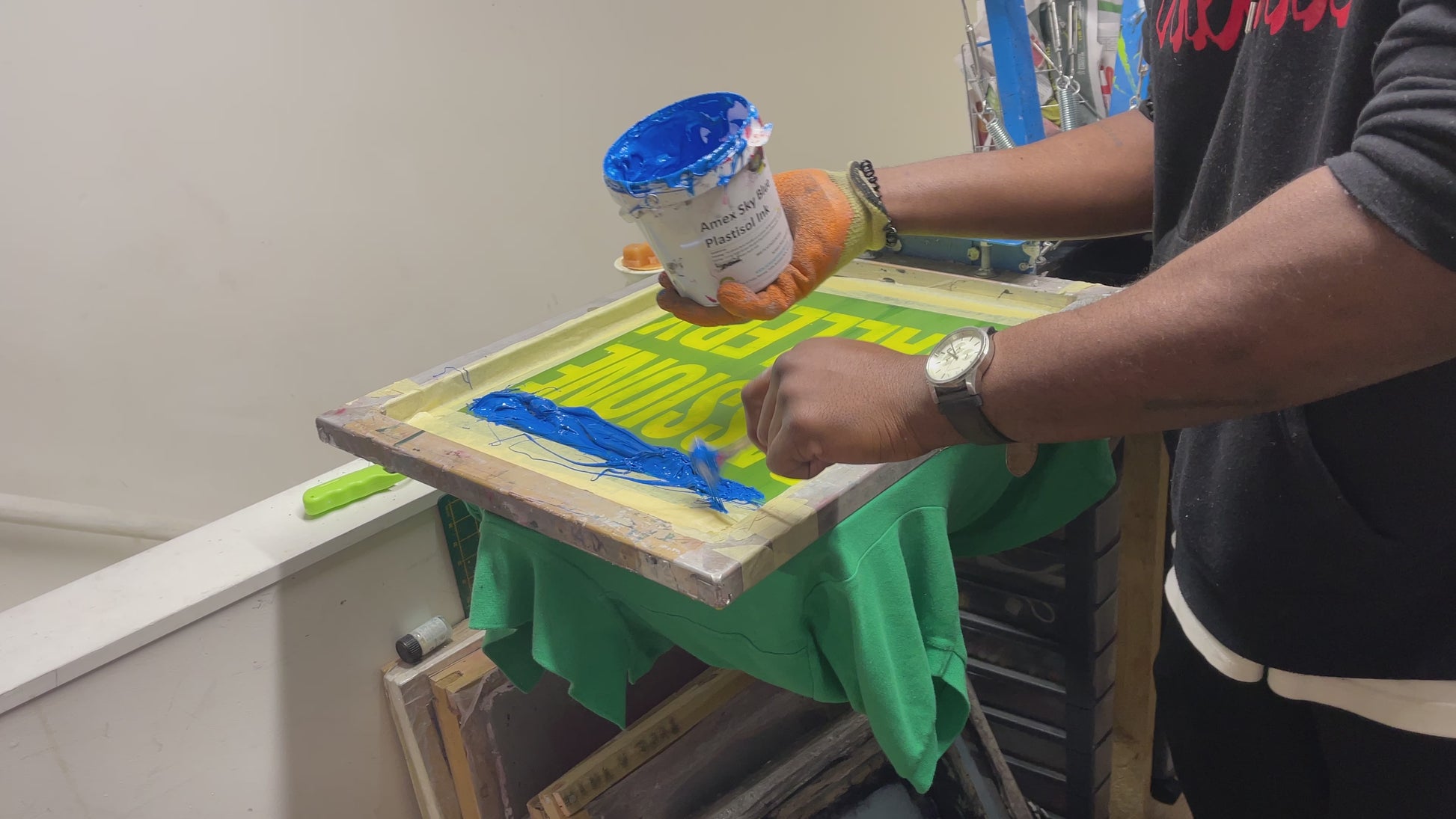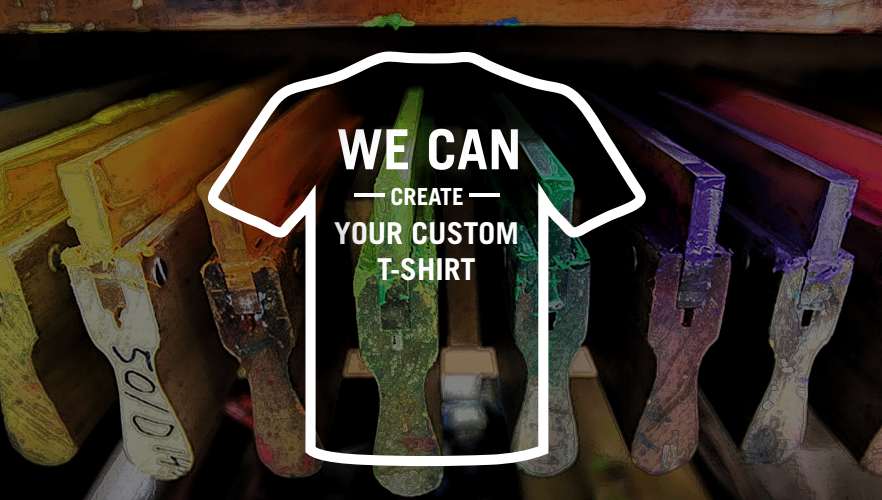Affordable Screen Printing Kit for Home Use
Affordable Screen Printing Kit for Home Use
Blog Article
Display Printing Uncovered: Everything You Need to Learn About T-Shirt and Garment Printing Methods
Screen printing is an interesting approach that integrates art with technique, supplying countless opportunities for creative thinking. Ready to explore the vital elements that make screen publishing an art kind?
The Essentials of Display Printing: Just How It Functions
When you dive into screen printing, you'll uncover it's both an art and a scientific research. At its core, screen printing involves creating a stencil, or display, that enables ink to pass with only in certain locations (screen printing kit). You start by selecting your design and preparing your display with a light-sensitive solution. When you expose this solution to light, it hardens, leaving your layout as a negative room.
Following, you'll mix your inks and prepare your printing surface area. Setting the display over the material, after that use a squeegee to press ink via the display onto the garment. This process requires accuracy, as you want clear, vibrant prints. After printing, you'll heal the ink with warmth, ensuring it adheres to the textile and lasts through laundries. Each step is vital, and understanding them will elevate your display printing abilities, transforming simple garments into one-of-a-kind, expressive pieces.
Kinds Of Screen Printing Methods
When you realize the essentials of screen printing, it's time to check out the numerous strategies that can raise your layouts. One prominent technique is conventional display printing, where ink is pressed with a stenciled screen. This technique is fantastic for strong, vivid shades. There's water-based ink printing, which offers a softer feel and is environment-friendly, however it calls for a various strategy to curing.
If you're aiming for fine information, consider discharge printing. This method gets rid of color from the material, leaving a soft, classic look. An additional choice is plastisol printing, recognized for its sturdiness and vibrant colors, making it a favored for several brand names. Lastly, try out halftone printing to create slope results and detailed layouts. Each technique has its unique appeal, so don't hesitate to try them bent on find what suits your style best!
Vital Equipment for Screen Printing
To attain sensational outcomes in screen printing, having the right devices is essential. You'll need a durable screen printing frame, which holds the mesh that moves your style onto the garment. Next off, spend in premium mops; these are crucial for using ink equally throughout the screen.
Selecting the Right Inks and Materials
When selecting inks and materials for screen printing, you require to take right into account the sort of ink that functions ideal for your project. Think of fabric compatibility to guarantee your styles look last and excellent lengthy. Also, discover green ink choices to make your printing procedure much more sustainable.
Sorts Of Screen Inks
Picking the appropriate display ink is essential for accomplishing dynamic, durable prints that fulfill your task's demands. There are several types of screen inks to examine. Specialized inks, such as metallic or glow-in-the-dark, can include special results to your designs.

Material Compatibility Considerations
Comprehending fabric compatibility is crucial for accomplishing top notch screen prints, particularly given that various materials react distinctly to various inks. Always test your inks on sample fabric to guarantee they adhere correctly and keep shade honesty. In addition, maintain in mind that fabric weight and structure can impact the last result, so picking the ideal ink and material combo is important for your job's success.
Eco-Friendly Ink Options
Environment-friendly inks are coming to be a prominent selection for display printers who desire to reduce their ecological influence while keeping high quality. When choosing inks, consider water-based inks, which are less unsafe and less complicated to tidy up compared to standard solvents. These inks bond well with textiles, providing lively outcomes without harmful chemicals. You could likewise explore eco-solvent inks that use less unstable natural substances (VOCs), making them a safer choice for both your health and wellness and the world.
In addition, search for inks made from renewable energies, such as soy or vegetable-based alternatives. By picking the right inks and products, you'll not just develop stunning styles but likewise add to a much more lasting printing process. Make the switch, and your prints will reflect your dedication to the setting!
Preparing Your Layout for Screen Printing

File Layout Needs
To assure your layout looks dynamic and sharp on textile, you'll require to pay attention to submit format needs for display printing. Start with vector data like AI or EPS, as they can be scaled without shedding high quality. If you utilize raster pictures, go with high-resolution data, such as TIFF or PNG, preferably at 300 DPI. Stay clear of using JPEGs, as they can shed clarity when resized. Additionally, make certain your design has a clear background to stop undesirable white edges on your prints. Ultimately, maintain color settings in mind; CMYK is basic for display printing, so convert your RGB designs appropriately. By complying with these guidelines, you'll set your art work up for a successful print.
Color Splitting Up Techniques
Color splitting up is a necessary step in preparing your style for screen printing, and mastering it can greatly boost your print quality. You'll require to break your layout into specific colors, as each shade needs a separate display during printing. This precision not just ensures exact shade depiction yet additionally enhances the printing process.
Resolution and Size
Attaining the very best cause display printing starts with ensuring your layout has the ideal resolution and dimension. Preferably, your art work ought to be at least 300 DPI (dots per inch) for sharp, clear prints. If you make use of lower resolution, your end product could look pixelated and less than professional.
When it comes to dimension, consider the dimensions of your print location. Style your art work to match the final print dimension, preferably creating it in the actual measurements you'll be publishing. In this manner, you'll prevent any type of unanticipated scaling issues.
Always inspect your layout in both vector and raster formats. Vector check that graphics can be scaled without losing top quality, making them perfect for display printing. Preparing properly will guarantee your design looks amazing on every garment!
Step-by-Step Display Printing Refine
Display printing is a dynamic process that enables you to produce dynamic designs on various surface areas. To get going, you'll need a screen, emulsion, and your chosen ink. Initially, prepare your display by cleansing it completely. Next off, use the emulsion uniformly and let it dry in a dark area. Once dry, expose your screen to light with your style positioned on it, which will certainly set the solution where the light hits, creating a stencil - screen printing kit.
After rinsing the unexposed emulsion, your display is all set. Set it up on your printing surface area and align your garment under it. Pour ink onto the screen and make use of a squeegee to push the ink through the pattern onto the textile. Lift the screen thoroughly and let the print completely dry. Treat the ink utilizing warm to ensure durability. That's it! You've effectively screen published your design.
Tips for Effective Screen Printing Projects
While you're diving into your display printing jobs, keep in mind that preparation is essential to success. Start by gathering all your products-- inks, screens, mops, and garments. A clean work space assists protect against unwanted mistakes, so clean up prior to you begin.
Following, verify your artwork is high-resolution and appropriately sized Your Domain Name for your garment. Evaluate your display for appropriate exposure and tidy it thoroughly to prevent spots. When blending your inks, comply with the supplier's guidelines to achieve the appropriate consistency.
During printing, apply also stress with your squeegee for consistent results. Do not hurry; take your time to verify each print satisfies your standards. After printing, allow your garments dry totally before managing or packaging them.
Finally, always keep an example of your benefit future referral. In this manner, you can analyze your progress and boost your techniques gradually. Pleased printing!

Regularly Asked Questions
Exactly how Lengthy Does It Require To Set up a Display Printing Task?
Establishing a display printing task typically takes about thirty minutes to an hour. You'll prepare the screens, mix inks, and adjust the press. The time differs based on complexity and experience, so remain organized!
Can I Publish on Various Textile Keys In Using the Same Method?
Yes, you can publish on different material types making use of the same method, however you'll need to change your inks and setups. Some textiles absorb ink differently, so trying out warranties the most effective results for every product.
What Prevail Blunders to Avoid in Screen Printing?
When display printing, avoid typical blunders like utilizing the wrong ink, neglecting proper direct exposure times, or missing pre-press checks. Constantly check your configuration and preserve tidy screens to ensure top quality outcomes each time.
Exactly How Can I Properly Tidy and Maintain My Display Printing Devices?
To correctly tidy and keep your screen printing equipment, you should routinely clean displays with suitable solvents, examine mops for wear, and ensure all tools are kept completely dry and dust-free. Uniformity improves and avoids pricey repairs efficiency.
Is Screen Printing Eco Friendly Compared to Various Other Approaches?
Display printing can be extra eco-friendly than various other methods, particularly if you make use of eco-conscious products and water-based inks. By choosing sustainable materials and techniques, you decrease waste and decrease your impact on the world.
Display Our site Printing Uncovered: Every Little Thing You Need to Know About Tee and Garment Printing Methods
At its core, display printing includes producing a stencil, or screen, that enables ink to pass through just in specific areas. Position the display over the material, after that use a squeegee to push ink via the display onto the garment. One preferred approach is conventional screen printing, where ink is pushed with a stenciled display.When selecting inks and products for display printing, you need to take right into account the type of ink that functions best for your project.
Report this page